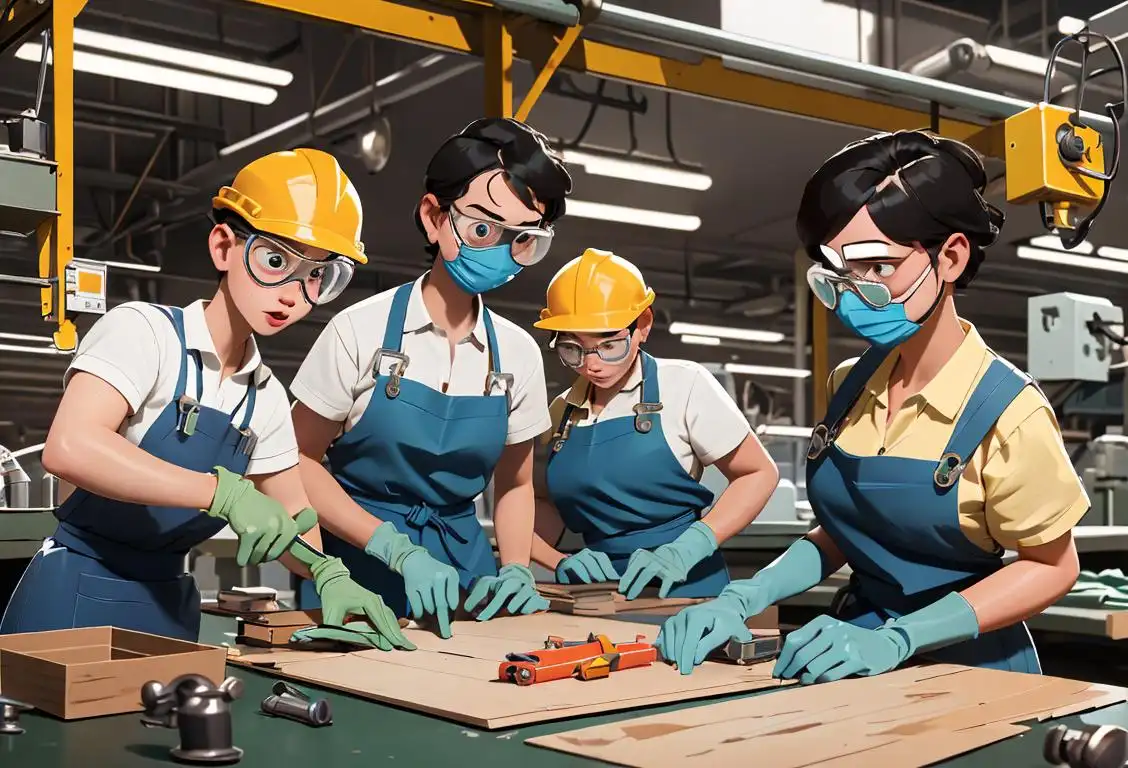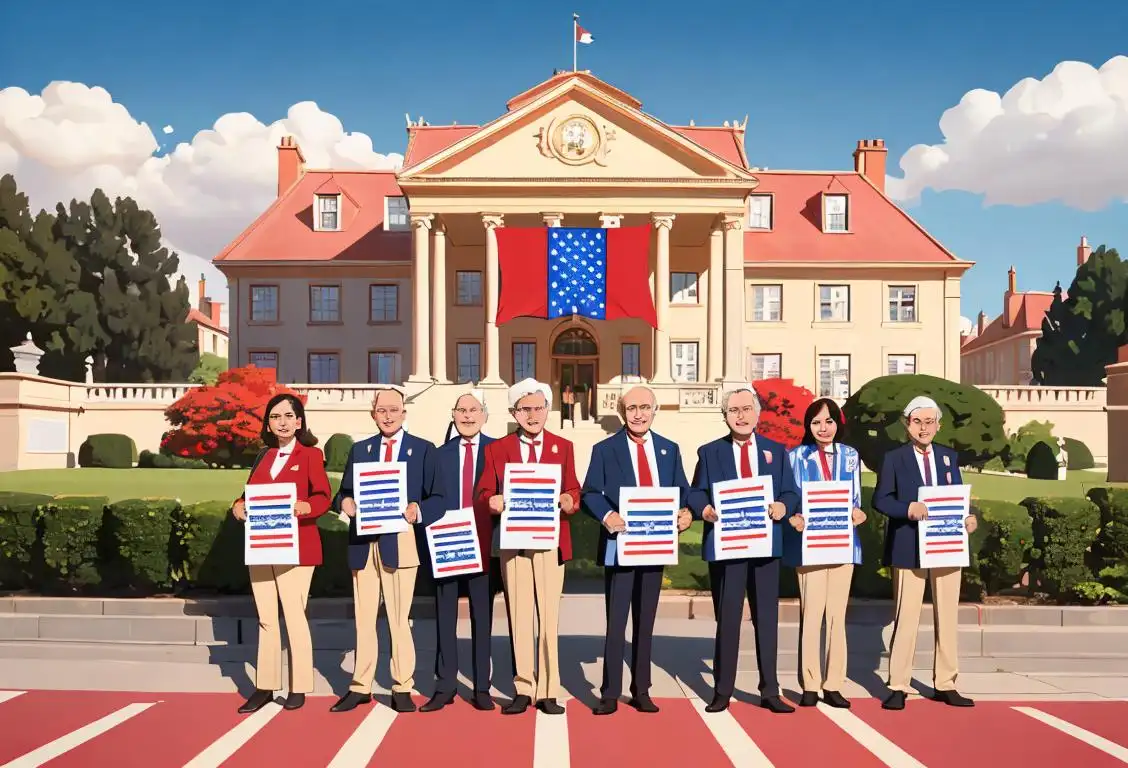National Manufacturing Day

From the moment we yawn and stretch out of bed, to our last blink before succumbing to sleep, we're surrounded by the fruits of labor from the unsung heroes of the manufacturing world. Who's ever given a second thought to the precision drill responsible for your perfect cup of morning coffee, or the intricately woven threads of the pajamas that lull you to sleep? Well, fear not, as National Manufacturing Day is here to save the day (and perhaps the night too)!
When is Manufacturing Day?
It's national manufacturing day on the 6th October.
What's National Manufacturing Day?
Emerging from the heartland of the inventors, the innovators, and the absolutely love-to-get-their-hands-dirty bunch, National Manufacturing Day is celebrated, surprisingly not by mass-producing millions of badges, but by hosting open houses and public tours of manufacturing facilities, displaying proudly 'how the sausage, or in this case, pretty much everything else, is made'. We detected 8724 mentions of it online since its inception and interestingly, the day received its highest number of mentions on October 6, 2017.
Manufacturing... it's Everywhere!
Picture it like this - if we lived in the Game of Thrones universe, manufacturing would be the Wall, silently and loyally standing on guard against the land of nothingness. It literally is everywhere, shaping the world we take for granted. On National Manufacturing Day, we take a moment to appreciate it and consider a world without it (spoiler alert: it's a dark and boring place).
Taking Things for Granted
It's time to celebrate the forgotten labourers working tirelessly behind the scenes. The engineers perfecting the screws that hold our lives together, the weavers bringing warmth and comfort into our lives, the brilliant minds designing the tools that help us conquer the daily grind. National Manufacturing Day is their moment in the spotlight, the applause they so truly deserve.
History behind the term 'Manufacturing'
1733
Introduction of the Flying Shuttle
In 1733, John Kay, an English weaver, invented the flying shuttle, a device that revolutionized the textile industry. The flying shuttle allowed weavers to work much faster by enabling them to throw the shuttle back and forth between the threads with one hand instead of needing two. This invention marked the beginning of the industrial revolution in manufacturing.
1764
James Hargreaves Invents the Spinning Jenny
In 1764, James Hargreaves, a weaver from Lancashire, England, invented the spinning jenny. This machine could spin multiple spools of thread at once, greatly increasing productivity. The spinning jenny was a key development in the history of manufacturing, as it allowed textile production to be more efficient and affordable.
1779
Samuel Crompton Patents the Spinning Mule
Samuel Crompton, an English inventor, patented the spinning mule in 1779. The spinning mule combined the features of the spinning jenny and the water-powered spinning frame, resulting in a more advanced and versatile spinning machine. The spinning mule played a crucial role in the mass production of cotton thread and further accelerated the industrialization of manufacturing.
1793
Eli Whitney Introduces the Cotton Gin
In 1793, Eli Whitney, an American inventor, introduced the cotton gin. This machine revolutionized the cotton industry by automating the separation of cotton fibers from the seeds, which had previously been a labor-intensive process. The cotton gin not only increased productivity but also contributed to the growth of the textile industry in the United States.
1800s
The Rise of Factories
During the 19th century, the industrial revolution led to the establishment of factories as the primary centers of manufacturing. These factories were equipped with advanced machinery and organized production lines, allowing products to be made on a larger scale. The shift from small-scale artisan workshops to large-scale industrialized factories marked a significant turning point in the history of manufacturing.
1913
Henry Ford Introduces the Assembly Line
Henry Ford, the founder of Ford Motor Company, implemented the assembly line in 1913. This innovative method of mass production involved dividing the manufacturing process into smaller, repetitive tasks performed by specialized workers. The assembly line greatly increased productivity and played a crucial role in making automobiles affordable and accessible to a wider population.
1980s
Automation and Computerization
In the 1980s, manufacturing underwent a significant transformation due to the widespread adoption of automation and computerization. Robots and computer-controlled machines became integral parts of the manufacturing process, allowing for increased precision, efficiency, and speed. This technological advancement revolutionized various industries and paved the way for modern manufacturing practices.
Did you know?
During the industrial revolution, manufacturing transformed everything! It moved us from hand production to machines, forever altering the way we make and consume goods. If we lined up all the machines used globally to manufacture our daily essentials, the chain would extend well past Mars!Tagged
awareness fun rememberance technology manufacturingFirst identified
28th August 2015Most mentioned on
6th October 2017Total mentions
8724Other days
Manufacturing Day
Unemployed Day
Heroes Day
Cancer Survivors Day
Memorial Day
Bestfriends Day
Suicide Prevention Day
Liberation Day
Pumpkin Day
Voters Day








